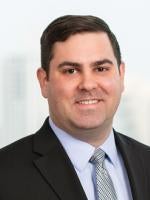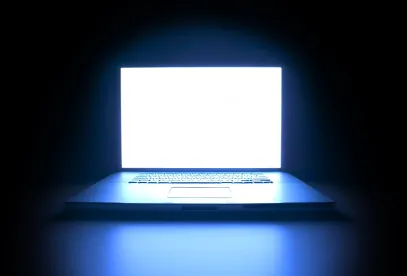In deciding whether the district court correctly interpreted various claim terms in four patents related to communication techniques used in computer gaming technology, the US Court of Appeals for the Federal Circuit found that rendering a decision as to the terms for at least two of the patents would be moot. Accordingly, the Federal Circuit affirmed the district court’s grant of summary judgment on noninfringement. Acceleration Bay LLC v. Take-Two Interactive Software (Oct. 4, 2021) (Reyna, J.)
Acceleration Bay is the owner of four unrelated patents that are generally directed to communication techniques associated with computer gaming. In particular, certain of the patents teach that an originating computer sends a message to its neighbors on a broadcast channel using point-to-point connections, and that the neighboring computers then sends the message to only their neighboring connections. This reduces the number of connections that each computer must maintain and improves efficiency in the system.
Acceleration Bay filed a patent infringement suit claiming that Take-Two Interactive Software, a software designer for various video games, including Grand Theft Auto V, NBA 2K15 and NBA 2K16, directly infringed the four asserted patents. As part of the district court proceedings, multiple terms recited in the claims of the four patents were construed. In particular, the court construed the claim term “m-regular” to mean “a state that the network is configured to maintain, where each participant is connected to exactly m neighbor participants.” Additionally, the court effectively embedded this definition of “m-regular” into other construed claim terms, including “fully connected portal computer” and “each participant being connected to three or more other participants.”
After claim construction, the district court granted summary judgment of noninfringement in favor of Take-Two on all asserted patents. In granting summary judgment, the court observed that Take-Two makes software, not computer networks or broadcast channels, and therefore its customers must introduce those elements. As such, direct infringement is inappropriate because multiple entities, not just Take-Two, contribute to the allegedly infringing system. The court rejected Acceleration Bay’s argument under Centrak, Inc. v. Sonitor Techs., Inc. that Take-Two was actually the “final assembler” because it installed the software for its customers. The court additionally identified multiple reasons why the “m-regular” limitation was not met in the accused products, including the fact that Acceleration Bay identified no source code to support its theory. Acceleration Bay appealed.
With respect to two of the four patents on appeal, Take-Two argued that Acceleration Bay’s appeal is moot because it only addressed one of the two reasons the district court granted summary judgment of noninfringement. Specifically, the court granted summary judgment on these two patents because (1) the accused products do not meet the “m-regular” limitation and (2) Acceleration Bay’s “final assembler” theory fails as a matter of law. On appeal, Acceleration Bay addressed only the “final assembler” theory. As such, the Federal Circuit found that a ruling on this issue would not affect the court’s summary judgment ruling, and the appeal of these two patents is moot.
The Federal Circuit found that the issues presented on appeal surrounding the third patent suffer from similar deficiencies. Specifically, with respect to the third patent, Acceleration Bay only challenged the district court’s construction of the term “fully connected portal computer,” which it alleged was erroneous for including the “m-regular” limitation. Again, Take-Two noted that the Court’s decision on this issue would be moot because Acceleration Bay did not challenge the court’s construction of the term “each participant being connected to three or more other participants,” which the court also construed to include the “m-regular” functionality. The Federal Circuit agreed and affirmed the district court’s decision on the third patent.
With respect to the fourth patent, the Federal Circuit dismissed the “final assembler” argument by concluding that Acceleration Bay miscomprehended Centrak. In Centrak, “even though defendant did not make some of the existing networking components, it ‘made’ the claimed system when it installed its own hardware onto the existing network, thereby completing the claimed system.” Conversely, Take-Two does not make hardware that is installed onto an existing system. The Court found that the instant case is more closely aligned with Centillion v. Qwest, where “the customer, not Take-Two, completes the system by providing the hardware component and installing the client software.” Accordingly, the Federal Circuit affirmed the district court’s holding with respect to the fourth patent.




 />i
/>i

